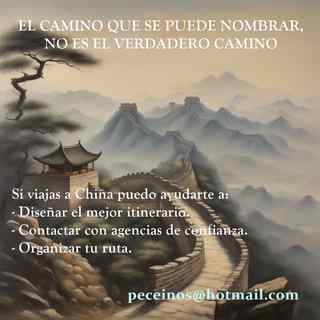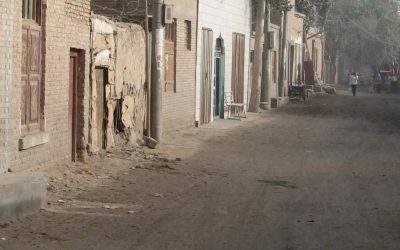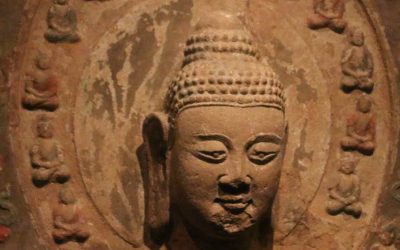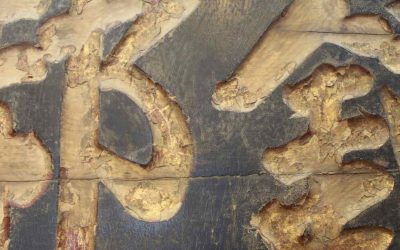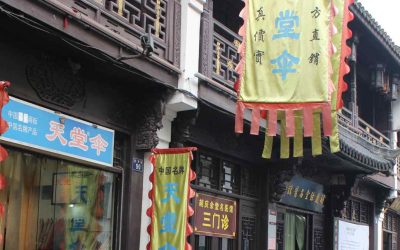Peter Harvey. Buddhism: Teachings, History and Practices. Cambridge University Press. 2013.
(Excerpts from the book. Page 11 and ff.)
In its origin, Buddhism was a Samana-movement. Samanas were wandering ‘renunciant’ thinkers who were somewhat akin to the early Greek philosophers and mystics. The Samanas rejected the Vedic tradition and wandered free of family ties, living by alms, in order to think, debate and investigate. The main Samana groups of Buddha’s time were:
JAINS
Jainism was founded, or at least led in the Buddha’s day, by Vardhamāna the Mahāvīra, or ‘Great Hero’. It teaches that all things, even stones, are alive, each containing a Jīva, or ‘Life-principle’. These are seen as individually distinct, rather like the Western idea of a ‘soul’ but unlike the universal Ātman of the Upanisads, and to be naturally bright, omniscient and blissful. The aim of Jainism is to liberate one’s Jīva from the round of rebirths by freeing it from being weighed down by an encrustation of karma, seen as a kind of subtle matter. The methods of doing so are primarily austerities such as fasting, going unwashed and pulling out the hair, so as to wear out the results of previous karma, and self-restraint, total non-violence to any form of life, and vegetarianism, so as to avoid the generation of new karma. The free-will of the Jīva is emphasized, though even actions such as unintentionally killing an insect are held to generate karma.
AJIVIKAS
Their founder was Makkhali Gosāla (Skt Maskarin Gośāla). Gosāla’s key doctrine was that niyati, or impersonal ‘destiny’, governed all, such that humans had no ability to affect their future lives by their karma: actions were not freely done, but were determined by niyati. Gosāla thus believed in rebirth, but not in the principle of karma as that which regulates the level of a person’s rebirth. The ‘Life-principles’ of living beings are driven by niyati alone through a fixed progression of types of rebirths, from a low form of animal to an advanced human who becomes an Ājīvika ascetic. The Ājīvikas practised rigorous asceticism such as fasting, nakedness and perhaps also disfiguring initiations, and aimed to die by self-starvation (as Vardhamāna in fact did), as a fitting way to end their last rebirth.
MATERIALISTS
The Materialists’ aim was to lead an abstemious, balanced life which enjoyed simple pleasures and the satisfaction of human relationships. They denied any kind of self other than one which could be directly perceived, and held that this was annihilated at death. They therefore denied the idea of rebirth, and also those of karma and niyati. Each act was seen as a spontaneous event without karmic effects, and spiritual progression was not seen as possible.
SKEPTICS
The Skeptics responded to the welter of conflicting theories on religious and philosophical issues, and the consequent arguments, by avoiding commitment to any point of view, so as to preserve peace of mind. They held that knowledge on such matters was impossible, and would not even commit themselves to saying that other people’s views were wrong. The Buddha saw this evasive stance as ‘eelwriggling’, though he shared the wish to step aside from the ‘jungle’ of conflicting views, and avoid dogmatic assertions built on flimsy grounds.
More posts on Chinese culture
Los Baoan, maestros constructores de espadas
Los Baoan, maestros constructores de espadas En las secas tierras de la provincia de Gansu, al pie de la montaña Jishishan, hay tres aldeas habitados por una gente diferente. A primera vista su vida es igual a la de cualquiera otra de las poblaciones musulmanas de...
Kashgar, la joya de la Ruta de la Seda
Kashgar, la joya de la Ruta de la Seda Los que preparan un viaje a la Ruta de la Seda china de repente descubren que entre los lugares recomendados, hay uno a considerable distancia de todos los demás. Es la ciudad de Kashgar y todo aquel que realizara un viaje...
La escultura budista más bella de Beijing
La escultura budista más bella de Beijing Es la “Escultura de piedra del Buda Sakyamuni con dos guardianes”, que se encuentra en el Museo de la Capital de Beijing. Está fechada en la Dinastía Wei del Norte, en el 23º año del Emperador Taihe (año 499 de nuestra era)...
Literatura china: autores y obras más importantes
La tradición literaria de China no es de las más antiguas del mundo. Es superada en miles de años por las del Cercano Oriente y la de Egipto. Sin embargo se puede afirmar que es la tradición literaria que puede presumir de mayor continuidad a lo largo de la historia....
Caracter chino 久 jiǔ – largo tiempo.
Caracter chino 久 jiǔ – largo tiempo 1. largo tiempo 2. duradero HSK - 3 TRAZOS - 3 RADICAL -丿 Elementos ---- Pictograma de persona modificada. Serie fonética 久. Pictograma de una persona 人 = ⺈ con algo en su pierna, tal vez una cadena que le obliga a caminar...
Violencia y canibalismo en las Cinco Dinastías
Violencia y canibalismo en las Cinco Dinastías Cuando uno empieza a conocer la historia de China concentra sus lecturas en los momentos culminantes de la misma, en esas grandes dinastías que expandieron el territorio, recrearon sorprendentes formas culturales y se...
More posts on China ethnic groups
Los Baoan, maestros constructores de espadas
Los Baoan, maestros constructores de espadas En las secas tierras de la provincia de Gansu, al pie de la montaña Jishishan, hay tres aldeas habitados por una gente diferente. A primera vista su vida es igual a la de cualquiera otra de las poblaciones musulmanas de...
Kashgar, la joya de la Ruta de la Seda
Kashgar, la joya de la Ruta de la Seda Los que preparan un viaje a la Ruta de la Seda china de repente descubren que entre los lugares recomendados, hay uno a considerable distancia de todos los demás. Es la ciudad de Kashgar y todo aquel que realizara un viaje...
La escultura budista más bella de Beijing
La escultura budista más bella de Beijing Es la “Escultura de piedra del Buda Sakyamuni con dos guardianes”, que se encuentra en el Museo de la Capital de Beijing. Está fechada en la Dinastía Wei del Norte, en el 23º año del Emperador Taihe (año 499 de nuestra era)...
Literatura china: autores y obras más importantes
La tradición literaria de China no es de las más antiguas del mundo. Es superada en miles de años por las del Cercano Oriente y la de Egipto. Sin embargo se puede afirmar que es la tradición literaria que puede presumir de mayor continuidad a lo largo de la historia....
Caracter chino 久 jiǔ – largo tiempo.
Caracter chino 久 jiǔ – largo tiempo 1. largo tiempo 2. duradero HSK - 3 TRAZOS - 3 RADICAL -丿 Elementos ---- Pictograma de persona modificada. Serie fonética 久. Pictograma de una persona 人 = ⺈ con algo en su pierna, tal vez una cadena que le obliga a caminar...
Violencia y canibalismo en las Cinco Dinastías
Violencia y canibalismo en las Cinco Dinastías Cuando uno empieza a conocer la historia de China concentra sus lecturas en los momentos culminantes de la misma, en esas grandes dinastías que expandieron el territorio, recrearon sorprendentes formas culturales y se...

